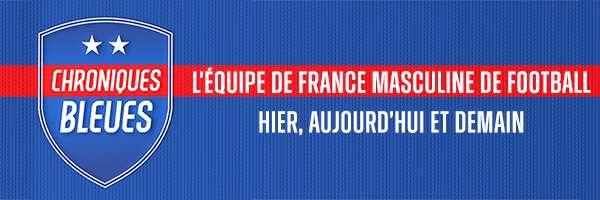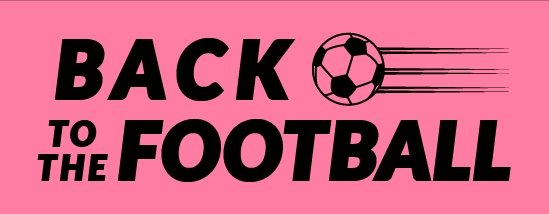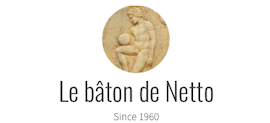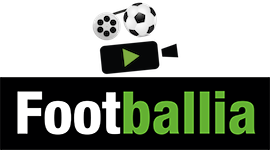Lire sur le site de Soccer Nostalgia The Soccernostalgia Interview-Part 15
Lire la version en anglais. English version here
Cet article fait partie de la série Dialogue avec Soccer Nostalgia
Soccernostalgia : Michel Hidalgo a débuté sa première saison complète aux commandes avec comme objectif les Éliminatoires de la Coupe du Monde. Quelle était l’ambiance de ce début de saison ?
Bruno Colombari :Pendant l’été, les Olympiques ont déçu à Montréal en s’inclinant en quart de finale contre la RDA (0-4). La moitié du groupe joue déjà ou jouera bientôt en A, dont Patrick Battiston, Eric Pécout, Olivier Rouyer et bien sûr Michel Platini, qui marquera trois buts lors du premier tour. Michel Hidalgo attend beaucoup de ce dernier, qui s’annonce comme la plus belle promesse du football français avec Dominique Rocheteau. Mais il sait bien qu’il n’a aucun droit à l’erreur dans un groupe à trois avec seulement quatre matchs à jouer et un seul qualifié pour la Coupe du monde 1978. En fait, ce sont quasiment deux matchs aller-retour qu’il faudra gagner pour passer. L’amalgame entre la jeune génération et les joueurs plus expérimentés (Trésor, Michel, Guillou, Baratelli, Lacombe) lancés par Boulogne et Kovacs sera la clé. Mais rien ne dit qu’il va fonctionner. Michel Hidalgo a aussi l’intention de s’appuyer sur les joueurs de Saint-Etienne, qui ont l’habitude des matchs de Coupe d’Europe et qui ont accumulé beaucoup de confiance. Là aussi, il reste à voir comment ceux-là vont s’intégrer au reste de l’équipe.
La saison a commencé par un match amical contre le Borussia Mönchengladbach, champion d’Allemagne de l’Ouest. La victoire facile contre un club a été suivie la semaine suivante d’un match amical à Copenhague contre le Danemark (1-1). Le Danemark a dominé pendant une grande partie du match. Que pouvez-vous dire du match contre le Danemark ?
Le 5-0 contre Mönchengladbach, avec six Stéphanois titulaire et un septième entré en cours de jeu, a démontré la puissance offensive des Bleus. Et la sélection danoise en 1976 n’a rien à voir avec celle qui va briller entre 1983 et 2002. Si son championnat est encore amateur, l’équipe du Danemark compte tout de même une dizaine de professionnels évoluant en Allemagne ou aux Pays-Bas pour la plupart. Les plus doués sont Henning Jensen, qui joue au Real Madrid et Alan Simonsen, l’attaquant du Borussia Mönchengladbach, avec qui il atteindra la finale de la Coupe d’Europe en mai 1977. Mais Simonsen est absent contre la France.
A Copenhague, les Bleus sont bousculés par une équipe qui presse beaucoup, met de l’impact physique et joue vite dans les espaces. Ils montrent leurs lacunes à l’extérieur, qu’ils garderont d’ailleurs jusqu’en 1986, même quand ils dominaient l’Europe. Les joueurs de Saint-Etienne déçoivent, la défense inquiète et les attaquants ne concrétisent pas leurs occasions. Ce n’est pas bon signe avant le déplacement en Bulgarie, même si Platini égalise sur coup franc indirect à la dernière minute.
La Bulgarie a accueilli la France à Sofia pour le premier match de qualification pour la Coupe du monde en octobre. C’est l’un des matchs les plus controversés de l’histoire du football français. Les nombreuses erreurs de l’arbitre écossais M. Ian Foote ont culminé avec Thierry Roland le traitant de « Salaud » ? Quels sont vos souvenirs de ce match dont on parle beaucoup ?
C’est un match très important pour moi car c’est le premier de l’équipe de France que j’ai vécu en direct, à la télévision, un samedi après-midi. Pour un article de Chroniques bleues (https://www.chroniquesbleues.fr/9-o...), je l’ai revu il y a quelques mois. Et j’ai été frappé par la qualité technique de l’équipe de France, même s’il manquait deux titulaires (Larqué et Rocheteau). Les défenseurs montent souvent, et Platini joue très avancé, juste derrière Lacombe et Six. Surtout, ils ne se laissent pas impressionner par l’ambiance hostile et les tacles appuyés, et marquent deux fois en trois minutes en fin de première mi-temps.
Mais c’est une équipe jeune qui n’a pas l’expérience pour gérer un tel avantage, surtout à l’extérieur. C’est dommage, parce que la France pouvait gagner ce match et se donner de la marge dans la course à la qualification. La réduction du score par les Bulgares juste avant la mi-temps annonce une deuxième période compliquée. Jusqu’à ce moment là, l’arbitrage de Ian Foote avait été correct. Que s’est-il passé à la mi-temps ? Nul ne le sait. Par la suite, ses décisions sont systématiquement défavorables aux Bleus : pénalty flagrant non sifflé pour une faute du gardien Kratsev sur Platini, but accordé aux Bulgares juste après malgré deux joueurs hors jeu et pénalty sifflé pour Bonev à trois minutes de la fin. Si Bonev n’avait pas tiré à côté, la France aurait été certainement éliminée. Après le match, j’étais partagé entre la colère et le soulagement, car le 2-2 était un bon résultat et les Bleus avaient montré de belles choses.
Pour le prochain qualificatif, la France a accueilli la République d’Irlande à Paris. La France a fait le nécessaire en s’imposant à domicile (2-0). Que retenez-vous de ce match ?
Michel Hidalgo a essayé de conserver l’équipe qui a brillé à Sofia. Il a quand même dû changer un milieu de terrain, le Breton Raymond Kéruzoré remplaçant Christian Synaeghel, et en attaque Dominique Rocheteau retrouve sa place, car Jean Gallice n’a pas été au niveau attendu en Bulgarie.
Mais les Bleus souffrent contre des Irlandais dont le sélectionneur, Johnny Giles, est aussi joueur malgré ses 37 ans. Avec Frank Stapleton, l’attaquant d’Arsenal, épaulé par Steve Heighway (Liverpool) et Don Givens (Queens Park Rangers), l’Irlande inquiète, même si on ne la verra en phase finale qu’en 1988, à l’Euro. Les Irlandais se créent les occasions les plus nettes, et endorment les Français avec un jeu lent au milieu.
Mais dès que les Bleus accélèrent, les occasions se multiplient, et la victoire en deuxième mi-temps est logique avec des buts de Platini au retour des vestiaires et de Bathenay en fin de match. On n’oubliera pas non plus un but apparemment valable de Givens refusé aux Irlandais pour une position de hors-jeu. L’opération est excellente, mais il a manqué d’efficacité aux Français pour se mettre à l’abri plus tôt dans le match.
La France a commencé la nouvelle année 1977 avec un match amical de haut niveau contre l’Allemagne de l’Ouest (qui serait d’ailleurs le dernier match international de Franz Beckenbauer). Le but d’Olivier Rouyer a valu à la France une victoire rare contre des adversaires difficiles. Que retenez-vous de ce match ?
Battre un champion du monde en titre, surtout quand on vient de manquer deux Coupes du monde (1970 et 1974), ce n’est pas rien. C’était arrivé en octobre 1954, contre la RFA déjà (3-1). Mais l’équipe de France avait perdu en 1963 contre le Brésil de Pelé et en 1969 contre l’Angleterre de Hurst. Autant dire qu’elle n’était pas favorite face à la RFA, qui restait sur une série de 13 matchs sans défaite depuis deux ans. Et que sans Marius Trésor, Henri Michel ou Dominique Baratelli, Hidalgo forme une équipe très inexpérimentée avec trois débutants (le gardien André Rey, le défenseur Patrick Battiston et l’attaquant Loïc Amisse) et aucun joueur à plus de sept sélections avant le match. En face, Franz Beckenbauer en est à 103, et il y a aussi deux futurs protagonistes de Séville en 1982, Ulrich Stielike, qui évolue alors au milieu, et l’attaquant du Bayern Karl-Heinz Rummenigge.
Les Français subissent le début du match, mais ils tiennent bon, se créent des occasions par Platini et Rouyer, et même si leur victoire est un peu chanceuse, elle va leur donner beaucoup de confiance pour la suite. S’ils peuvent battre le champion du monde en titre, ces Bleus-là méritent d’aller en Argentine !
Ce match n’a pas été retransmis en France à cause d’un mouvement de grève à la télévision. Les seules traces qu’on en a est un résumé de six minutes pour le journal télévisé.
La France a connu son premier revers lors des éliminatoires de la Coupe du monde après sa défaite face à la République d’Irlande (0-1) à Dublin. La France n’a pas pu suivre le rythme des Irlandais plus physiques. Comment la presse a-t-elle réagi après ce match ?
Plutôt avec bienveillance. Preuve que l’équipe de France commence à être crédible, elle est comparée à Saint-Etienne, le meilleur club français du moment. Et les Verts viennent d’être éliminés par Liverpool, où joue l’ailier Heighway. Le parallèle est donc fait entre les deux défaites, et la conclusion, c’est qu’elles sont logiques, mais pas fatales. Bien sûr, c’est une habitude française, on cherche des excuses amusantes : le vent qui balaie Dublin, le ballon britannique, plus léger et plus petit que ceux utilisés sur le continent (le même qu’à Liverpool, d’ailleurs), qui a surpris la défense en ligne sur le but de Brady.
Surtout, les Bleus sont toujours aussi fragiles à l’extérieur : leur dernière victoire en compétition sur terrain adverse remonte à septembre 1971 en Norvège. Et dans un groupe qualificatif à trois, une défaite pouvait entraîner l’élimination. Tout allait dépendre du résultat de l’aller-retour entre la Bulgarie et l’Irlande. Si les Irlandais gagnaient deux fois, les Bleus n’avaient plus aucune chance de se qualifier.
La France a battu confortablement la Suisse (4-0) à Genève en amical. Était-ce la réponse parfaite après la défaite à Dublin ?
L’enjeu n’était pas du tout le même, ce n’était qu’un match amical sans pression, contre un adversaire que la France n’avait plus battu depuis 1955. Mais il s’est passé quelque chose d’intéressant, même si Michel Hidalgo ne l’a pas vraiment remarqué sur le moment. Le milieu de terrain Sahnoun-Giresse-Platini est une esquisse de ce que sera le carré magique cinq ans plus tard, ou plutôt le trio créatif Tigana-Giresse-Genghini mis en place en avril 1981. Alain Giresse est un magnifique technicien, mais à 24 ans il ne compte qu’une seule sélection (en 1974), et son profil de meneur de jeu est proche de celui de Platini, qui lui fait de l’ombre. En les associant, avec un excellent joueur comme Sahnoun, Hidalgo obtient une très belle victoire qui aurait dû lui donner des idées.
La France devait faire une tournée en Amérique du Sud en fin de saison. Comment Hidalgo a-t-il considéré ce tournée et y a-t-il eu de l’opposition d’autres clubs ?
Ce sont surtout les dirigeants de Saint-Etienne qui protestent, car ils ont joué la finale de la Coupe de France huit jours avant le match contre l’Argentine à Buenos Aires. Michel Hidalgo, qui essaie de concilier l’intérêt des clubs et celui de la sélection, ne prend que Bathenay et Janvion. Mais Nantes, qui vient de gagner le championnat de France, a six joueurs en sélection.
Alors que la France n’avait été quitté l’Europe qu’une fois pendant ses 66 premières années (en 1930 en Uruguay), c’est la troisième fois en six ans qu’elle se rend en Amérique du Sud, après une tournée en janvier 1971 en Argentine et une invitation à la Coupe de l’Indépendance au Brésil en 1972. C’est l’occasion de s’habituer à l’ambiance des stades argentins et au climat de l’hiver austral. Pour Michel Hidalgo, qui n’a pas encore l’expérience de gérer un groupe sur la durée et à l’étranger, la tournée est indispensable. Elle sert aussi à motiver les joueurs en leur donnant un aperçu de ce qui les attend s’ils se qualifient.
La France a mérité des éloges après avoir dominé et tenu l’Argentine sans but à Buenos Aires ? Que pouvez-vous dire de ce match ?
L’équipe d’Argentine n’est pas tout à fait la même que celle que les Bleus retrouveront un an plus tard à la Coupe du monde. Il n’y a pas le gardien Ubaldo Fillol, ni les attaquants Mario Kempes et Daniel Bertoni, qui marqueront tous les deux lors de la finale contre les Pays-Bas.
Les Français sont meilleurs sur ce match et se créent les meilleures occasions, même s’ils jouent sans vrai avant-centre (Olivier Rouyer est encadré par les Nantais Baronchelli et Amisse). Au milieu, Sahnoun est associé à Platini et on se dit que s’il était allé à la Coupe du monde, un an plus tard… Le 0-0 est plutôt flatteur pour les Argentins, qui montrent leurs limites. Dommage que Diego Maradona, qui a fait ses débuts en sélection quatre mois plus tôt à l’âge de 16 ans, n’ait pas été retenu par Menotti.
Le match le plus mémorable a eu lieu quelques jours plus tard à Maracana contre le Brésil. Après avoir pris du retard (0-2), la France s’est mérité le respect du public brésilien pour sa riposte en scandant « França, França ». Ce moment a vraiment touché Hidalgo. Que pouvez-vous dire de ce match classique ?
C’est la quatrième fois que l’équipe de France rencontre le Brésil (même si la première, jouée juste après la Coupe du monde 1930, n’est pas considérée comme officielle), et elle a perdu les trois précédentes. Ce n’est pas une surprise de voir donc le Brésil mener 2-0, même si cette équipe-là est moins forte que celles de 1982 ou de 1970. Zico n’est pas là, mais il y a Rivelino et l’attaquant Roberto Dinamite, qui marque le deuxième but.
Les Français alignent une belle équipe, même si trois titulaires ne seront pas dans la liste des 22 l’année suivante (Rey, Sahnoun et Zimako). J’ai découvert le match en 2013, car à l’époque il était diffusé à une heure du matin en France (et mes parents n’avaient pas la télévision). C’était une ambiance étonnante, avec beaucoup de monde sur la pelouse avant le match et les supporters qui passaient d’un virage à l’autre à la mi-temps pour se placer derrière la cage française.
Quand Platini commence à jouer mieux, toute l’équipe devient dangereuse. Il trouve Didier Six qui marque un but magnifique avec un contrôle orienté, un coup du sombrero et un tir sous la barre. Même s’il s’est aidé de la main. Trésor égalise de la tête sur corner à cinq minutes de la fin. Et si le match avait duré plus longtemps, peut-être que la France aurait gagné.
La France a terminé sa tournée contre un club brésilien, l’Atletico Mineiro. Une équipe de France fatiguée et démotivée a perdu (1-3). Que retenez-vous de ce match et quel a été le bilan du Tour en général ?
La défaite contre l’Atlético Mineiro n’avait pas d’importance, même si les Français avaient l’habitude de battre les clubs, mais plutôt en début de saison, pas en fin. Pas de chance pour le défenseur niçois Henri Zambelli, qui joue son seul match en sélection, mais il ne compte pas.
La tournée est une réussite. Les Bleus en ont profité pour faire du tourisme à Rio, où ils ne reviendront qu’en 2014. Ils se sont rassurés sur leur capacité à voyager loin et à jouer dans de grands stades, même s’ils reviennent avec deux matchs nuls et sans avoir jamais mené au score. C’est quand même bien mieux que la prochaine tournée sud-américaine de juin 2013 qui se finira par deux défaites contre l’Uruguay (0-1) et le Brésil (0-3).
Quelle est votre bilan de la première saison complète d’Hidalgo en charge ? Qui ont été les révélations ?
Le bilan serait excellent sans la défaite à Dublin contre l’Irlande qui va rendre difficile la qualification pour l’Argentine, même si la victoire de la Bulgarie face aux Irlandais en juin (2-1) arrange bien les Bleus. La jeune équipe de Michel Hidalgo a battu les champions du monde et fait jeu égal avec l’Argentine et le Brésil, ce qui n’est pas rien. Parmi les révélations, on notera le défenseur Patrick Battiston, le gardien André Rey, tous deux du FC Metz, le milieu Omar Sahnoun, à la technique brésilienne, les gauchers Thierry Tusseau et Loïc Amisse, deux joueurs issus de la belle équipe du FC Nantes qui a mis fin à la domination de Saint-Etienne en championnat. Pourtant, sur la durée seul Battiston fera une grande carrière en sélection (56 matchs), même si Tusseau sera champion d’Europe en 1984 et encore là en 1986 au Mexique, sans jamais gagner un statut de titulaire.
C’est cette année-là, 1977, qu’a commencé la légende de l’équipe de France championne du monde des matchs amicaux, qui va se poursuivre en 1978 avec le nul en Italie et la victoire contre le Brésil. C’est flatteur, mais ce ne sera pas suffisant en compétition.








